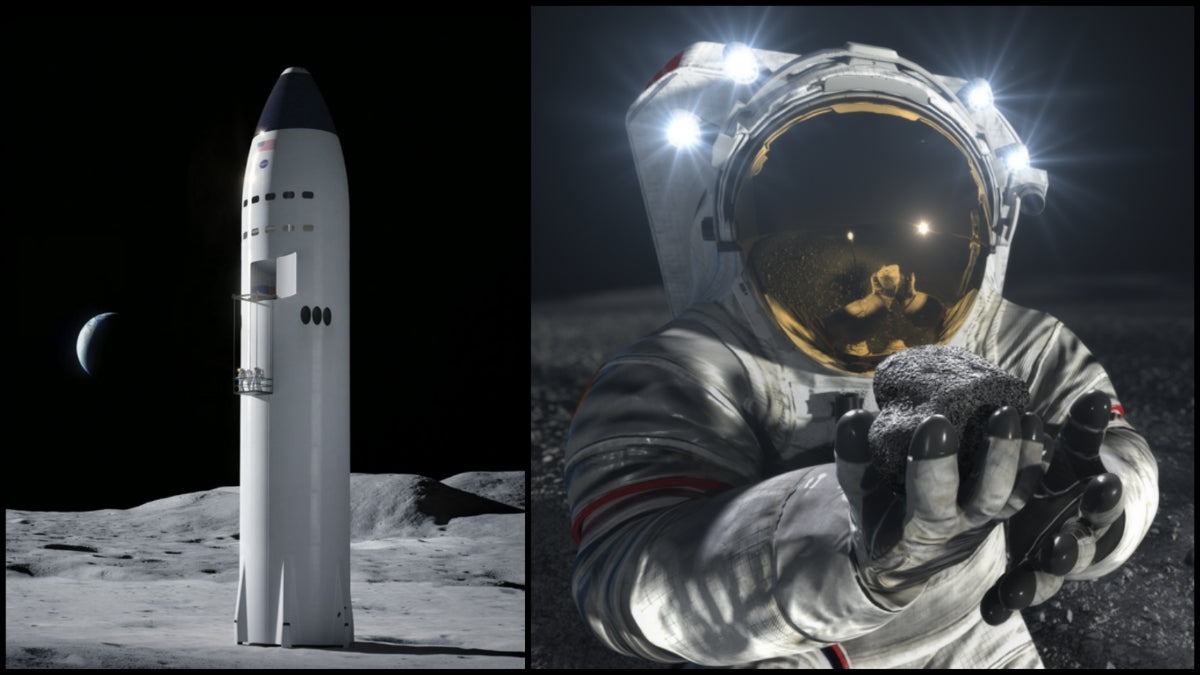When NASA and SpaceX return humans to the lunar surface in 2025 as part of the Artemis program, they will be tasked with bringing samples of lunar rocks and dirt to Earth. The agency has not yet selected the astronauts that will set foot on the Moon, however, this week NASA announced the geology team that will spearhead the scientific groundwork for the first crewed lunar landing in around half a century.
NASA and SpaceX signed a deal to develop a Starship Human Landing System (HLS) to land NASA Astronauts to explore the Moon during the Artemis III mission. This momentous voyage will see astronauts, including the pioneering first female lunar explorer, touch down near the lunar South Pole, a leap forward for scientific exploration and a significant stride towards prolonged lunar presence.
Dr. Nicky Fox, NASA Science Associate Administrator, underlined the pivotal role of science in the Artemis initiative .“Science is one of the pillars of Artemis,” said Dr. Fox. “This team will be responsible for leading the geology planning for humanity’s first return to the lunar surface in more than 50 years, ensuring that we maximize the science return of Artemis and grow in our understanding of our nearest celestial neighbor.”
The Artemis III Geology Team, helmed by Dr. Brett Denevi from Johns Hopkins University Applied Physics Laboratory, is set to collaborate closely with NASA in defining the mission's geological science objectives. The team will also chart out the geology surface campaign that the Artemis astronauts will execute during their historic lunar sojourn, aligning with the established Artemis science priorities.
Dr. Joel Kearns, deputy associate administrator for exploration in NASA's Science Mission Directorate, emphasized, “Selecting this team marks an important step in our efforts to optimize the science return of Artemis III. This team of well-respected lunar scientists has demonstrated experience with science operations, sample analysis, and operational flexibility, all of which is critical for the successful incorporation of science during Artemis III,” said Dr. Kearns, “With the establishment of the Artemis III Geology Team, we are ensuring that NASA will build a strong lunar science program.”
This expert team, comprising: Dr. Lauren Edgar, Dr. Bradley Jolliff, and Dr. Katherine Joy, Dr. Caleb Fassett, Dr. Dana Hurley, Dr. Gordon Osinski, Dr. Jennifer Heldmann, Dr. Jose Hurtado, Dr. Juliane Gross, Dr. Mark Robinson, and Dr. Yang Liu — they will not only design the astronauts' scientific activities during their lunar explorations but will also support real-time documentation and initial assessment of scientific data during the lunar operations. Significantly, the Artemis III Geology Team will scrutinize the data stemming from the mission, including the examination and cataloging of the first lunar samples collected by NASA since 1972.
The geology team's remit extends to analyzing samples from the Moon's South Pole, believed to harbor some of the oldest lunar material, dating back at least 3.85 billion years. Insights from these samples will not only deepen our understanding of lunar history but also hold valuable information about potential resources, including ice, that could prove crucial for future lunar missions.
What sets the Artemis III mission apart is its collaborative propulsion. NASA is set to launch its Space Launch System (SLS) rocket and the Orion capsule in tandem with SpaceX's Starship Human Landing System (HLS) for the crewed lunar exploration mission in 2025. NASA demonstrated the capabilities of the SLS and Orion when the formidable rocket was launched for the first time on November 16, 2022. The Orion spacecraft is meticulously engineered to dock with SpaceX's Starship HLS, allowing the crew to transition from Orion to Starship for the final lunar landing.
The convergence of NASA's SLS-Orion and SpaceX's Starship HLS stands as a testament to the power of collaboration in forging the next chapter of space exploration. As humanity readies to embark on Artemis III, the geology team's crucial role in unraveling the Moon's mysteries and driving forward lunar exploration is poised to make history.
》 Author's note: My work is possible Thanks to everyone who reads Tesmanian.com. Write your thoughts in the comment section below. If you have any story suggestions or feedback, feel free to Direct Message me on X.com (social media): Evelyn Janeidy Arevalo @JaneidyEve Read my most recent stories here: Recent News Stories 《
 Featured Images Source: NASA & SpaceX
Featured Images Source: NASA & SpaceX








